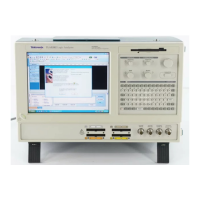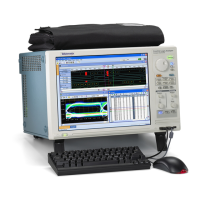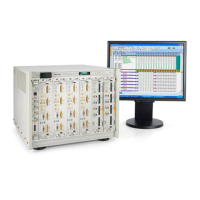Installation
Before you connect the probe to your instrument, read the following Operating considerations and Overview sections to
understand the operating characteristics and sequence of events necessary to properly install the probe and adapters.
CAUTION: To avoid ESD damage to the probe, always use an antistatic wrist strap (provided with your probe), and
work at a static-approved workstation when you handle the probe.
Operating considerations
Table 1: P7700 Series TriMode probes
Characteristic Description Specification
TekFlex solder-in tips P77BRWSR P77C292MM adapter
Input Voltage Dynamic range 2.5 Vpp (single-ended)
5.0 Vpp (differential
input)
6.0 Vpp (single-ended)
12.0 Vpp (differential
input)
1.2 Vpp (single-ended)
2.0 Vpp (differential
input)
Operating voltage
window
±5.25 V ±10.0 V ±4.0 V
Offset voltage range -4 V to +4 V -10 V to +10 V -4 V to +4 V
Maximum non-
destructive input voltage
-15 V to +15 V (tip attached or detached) -5 V to +5 V
Temperature Operating Probe compensation box: 0 °C to 45 °C (32 °F to 113 °F)
Probe cable, solder tips, and P77292MM adapter: -35 °C to 85 °C (-31 °F to
185 °F); Minimum Airflow required 46°C to 85°C (114.8 °F to 185 °F)
Non-operating Probe compensation box: -20 °C to 60 °Cg (-4 °F to 140 °F)
Probe cable, solder tips, and P77292MM adapter: -35 °C to 85 °C (-31 °F to
185 °F)
Humidity Operating Probe Compensation Box, Cable, Tips, and SMA adapter: 20% to 80%
Relative Humidity (%RH) at up to 45°C non-condensing
Non-operating Probe Compensation Box, Cable, Tips, and P77292MM adapter: 10% to
90% (Relative Humidity), non-condensing
Altitude Non-operating Probe Compensation Box, Cable, Tips, and SMA adapter: 12,000 meters
(39,370 feet)
Pollution Degree 2, Indoor use only
Installation
P7700 Series TriMode™ Probes 3
